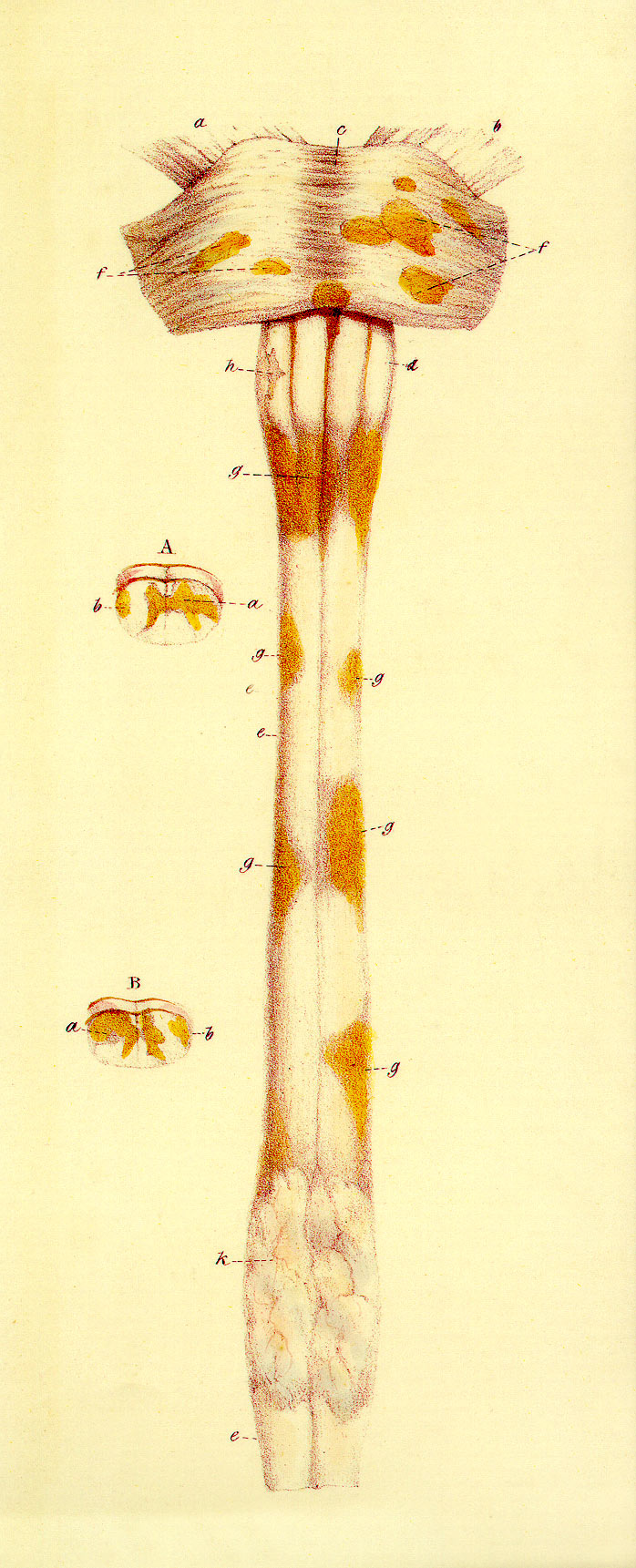|
Plate I.
Click image to enlarge

Lesion Specification:
Among the findings illustrated in the main figure, only the four
paired angulated scars involving, mainly lengthwise, the spinal cord's
flanks appear unmistakable. Besides, taking in the place between these
scars' uppermost pair, a comparable patch extending along the spinal bulb's
anterior median fissure and the spread of several rounded, yet otherwise
similar tissue changes in the pons' front are evident.
|
|
Plate I.
Carswell's Classical 1838 Illustration of "a peculiar diseased state of
the spinal cord and pons", chiefly set apart by "a remarkable lesion of
the spinal cord".
Main figure.
Cervical spinal cord and pons, anterior aspect (a, right, and b, left
cerebral peduncle; c, pons; d, spinal bulb; e, spinal cord; f,
"points of the pons"; g, "patches on the spinal cord"; h,
partial atrophy of right olive; k, softening of the spinal cord's cervical
enlargement).
Figg. A, B. Transverse cervical spinal cord sections showing that
"the discoloration commences on the surface of the white, and extends
inwards to the grey substance" (a, lesion extension to central grey matter;
b, involvement of white matter periphery only).
The Document's Significance:
This first depiction of a multiple sclerosis-specific lesion clearly
demonstrated the distinctive pattern of its encroachment upon the spinal cord's
flanks marked by two superimposed, not entirely co-extensive, obviously
different kinds of tissue changes. Shown in addition are comparable damages of
remarkably different configurations to the pons. Although the lesion's unique
formal characteristics were generally not paid attention to, its picture has
become the classical frontispiece of publications on the subject of "multiple
sclerosis".
|